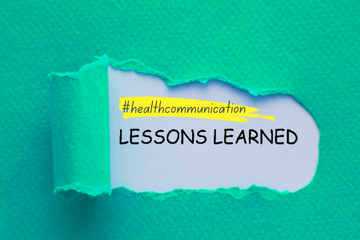Lessons learned: To fight misinformation, focus on emotions

You’re reading Lessons Learned, which distills practical takeaways from standout campaigns and peer-reviewed research in health and science communication. Want more Lessons Learned? Subscribe to our Call to Action newsletter.
Strategies to combat misinformation often use methods that focus on the accuracy of information, such as reminders to share accurate information and fact-checking. However, people frequently have other motives for sharing information, like signaling their morals. A recent article published in Science explored how outrage and misinformation-spread interact through a series of observational studies and experiments. The observational studies used data from Facebook (1,063,298 links) and Twitter (44,529 tweets) to determine how misinformation, classified based on how trustworthy the information source was according to professional organizations, impacted outrage (i.e. anger reactions on Facebook/presence of outrage in Tweet responses) and sharing. The study team also conducted two experiments with 1475 participants using 20 individually fact-checked headlines selected to evoke high or low outrage. The participants rated how accurate they thought the headline was and how likely they were to share it.
What they learned: In the observational studies, information from misinformation sources generated more outrage than information from trustworthy sources. Outrage resulted in more sharing of both information from trustworthy sources and misinformation. People were also more likely to share information without reading it first if they expressed outrage. The experiments confirmed that people were more likely to share high-outrage headlines, regardless of whether they were misinformation or trustworthy. Outrage did not impact people’s ability to discern whether information was accurate.
Why it matters: Misinformation strategies won’t work if they only focus on addressing the information itself. To fight misinformation properly, we must understand and address the emotions driving the spread.
➡️ Idea worth stealing: To fight misinformation, use a strategy that addresses people’s emotions, rather than solely focusing on facts.
What to watch: How public health communicators adapt their misinformation strategies to account for community emotions, especially in light of shifting platform policies. For more information on the state of the evidence for fighting misinformation, check out the newly released NASEM report on understanding and addressing misinformation about science.


